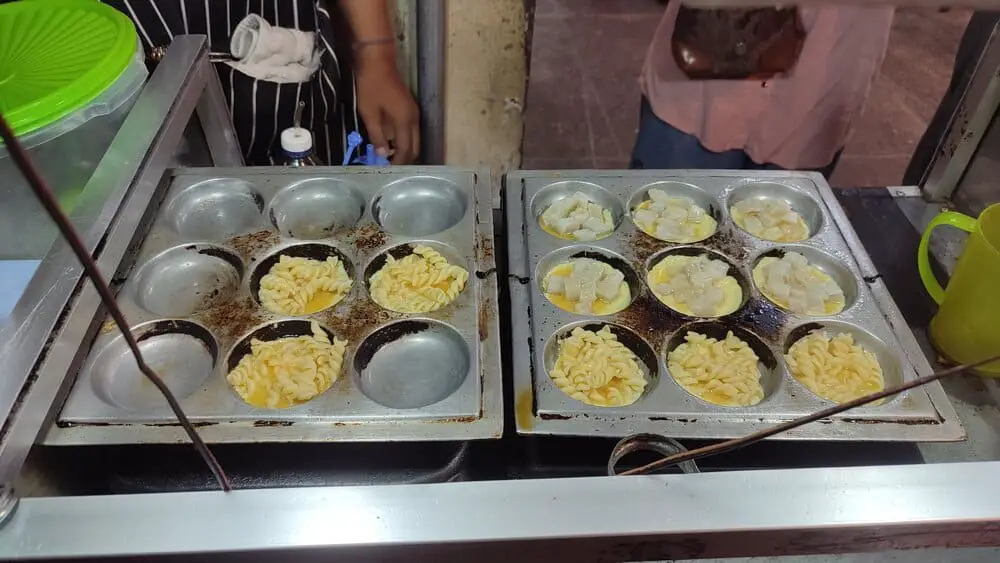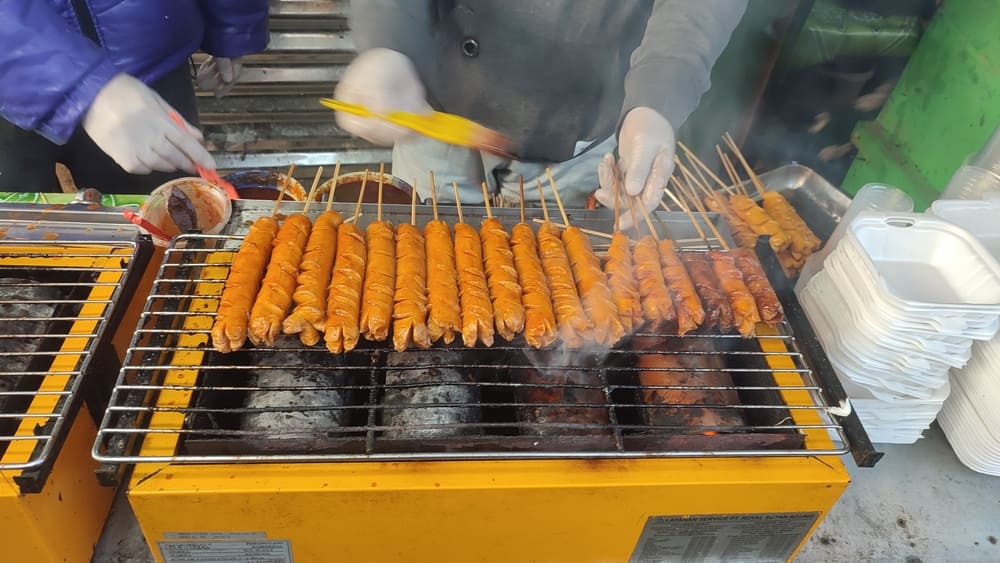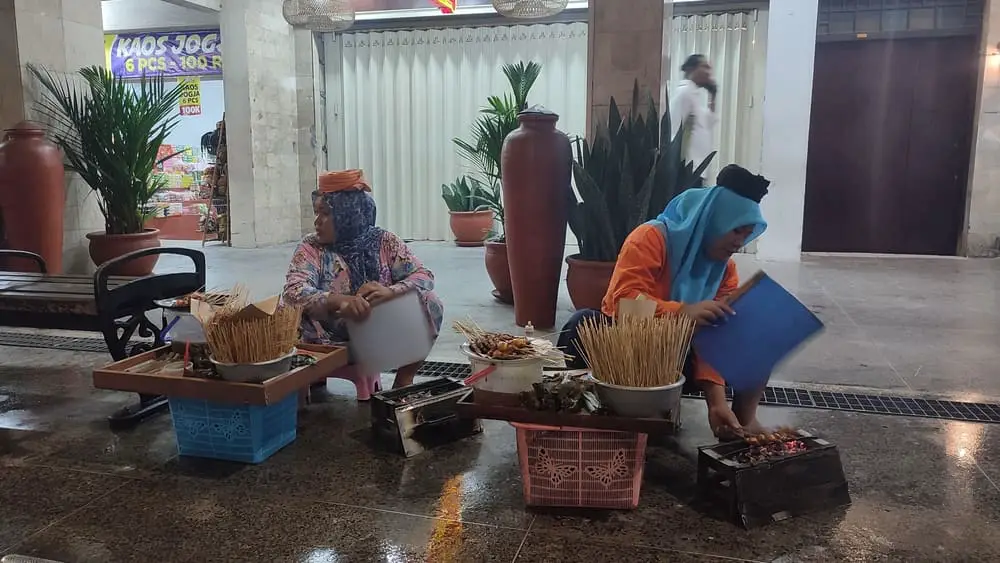27 Savory Indonesian Street Food Snacks and Where to Buy Them
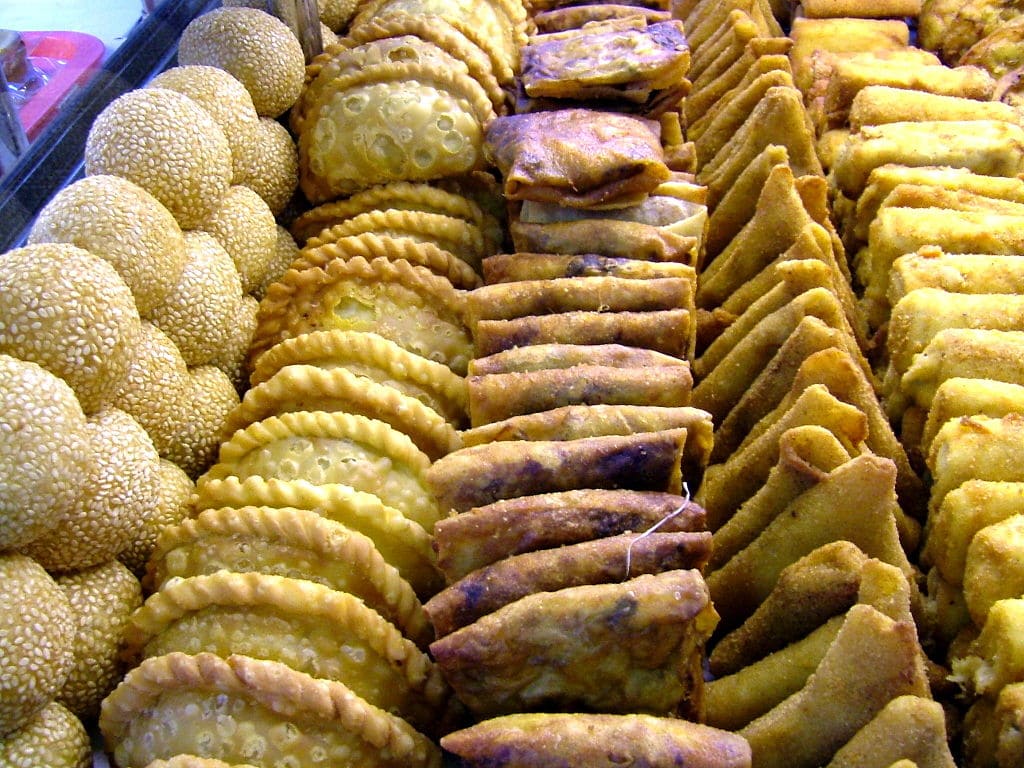
No matter where you are in Southeast Asia, street food rules supreme. Indonesia is no exception! Indonesian street food may not be as famous as in Thailand or the hawkers of Singapore, but after having spent months in Java and Bali I am here to change that notion!
Indonesia is a master of street food snacks and small, bite-sized appetizers. Best of all, Indonesian snacks are incredibly cheap!
Here’s everything you need to know about the snacking culture of Indonesia with pictures and prices of 27 delicious Indonesian street food snacks!
Also check out my list of Indonesian desserts each of which I’ve personally tried and rated by taste!
Lesson 1: “Snack” in Indonesian is “Jajanan”
1. Cilor and Maklor
Cilor is a portmanteau of the words “Aci” (tapioca starch) and “Telur” (egg). Note that “c” in Indonesian is always pronounced “Ch”.
Cilor consists of small square-shaped pieces of tapioca mixed with egg and then fried in a special 9-piece tray. Funnily, all the pieces are then mixed together, seasoned amply, and served in a plastic cup or bag.
Maklor is very similar but has macaroni instead of tapioca, hence the name. Both are some of the most popular Indonesian snacks all across the country.
Cilor and maklor both cost 1000 IDR / 0.07$ per piece and a portion usually includes 5 pieces.
2. Cimol Kentang
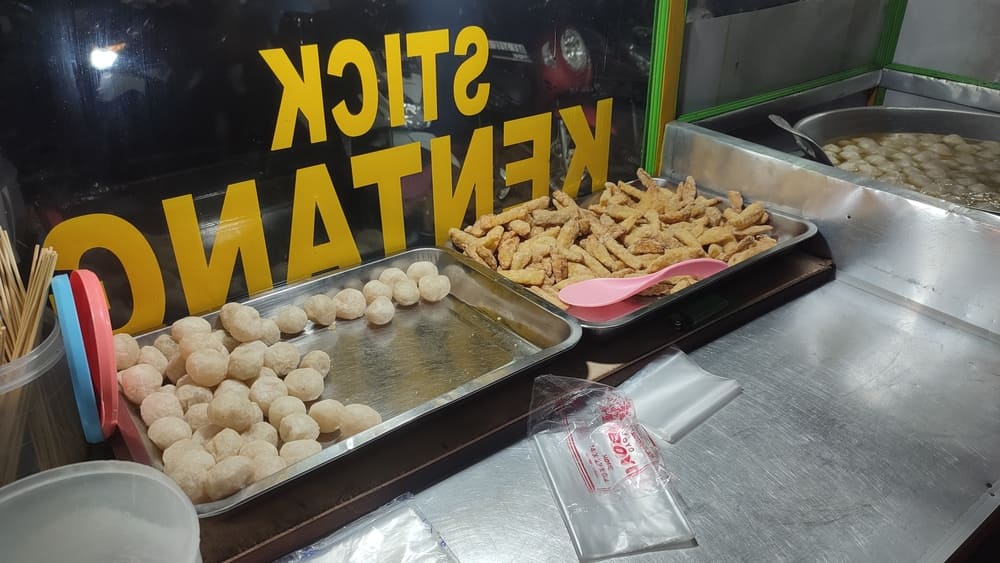
Cimol is another portmanteau (you’ll soon find out that Indonesians love combining words) of the words “Aci” (tapioca starch) and “digemol” (~rounded).
Cimol are small puffy balls of tapioca flour, seasoned with balado or bumbu (both basically mean seasoning) with a pleasantly chewy texture.
Cimol is usually sold with kentang goreng or fried potatoes, aka fries.
A small portion usually costs 3000 to 5000 IDR (0.20 to 0.35$).
3. Cireng
Aci + Digoreng = Cireng, or another variation of fried tapioca flour. It comes in a different shape than Cimol – bigger and puffier. Other than that, they are generally the same snack and have the same prices.
4. Telur Gulung

Telur Gulung literally means egg roll and that’s exactly what it is – an egg rolled on a stick as it is being fried.
Vendors prepare it by pouring a tablespoon of egg in boiling oil and then quickly twisting a thin wooden stick so that the egg rolls around it. The result is a very soft and airy egg, which makes for an incredible snack! Don’t forget to add some ketchup and mayo!
Price per piece is 1000 IDR / 0.07$ and a standard portion has 5 pieces.
5. Sempolan

Sempolan, like many other Indo snacks, is made of tapioca and spices. The dough that results from this mix is wrapped on a skewer and boiled. Then it is dipped in egg and deep fried to ensure the texture is crunchy and crisp.
The standard price for one stick of sempolan is 1000 IDR / 0.07$.
6. Cilok
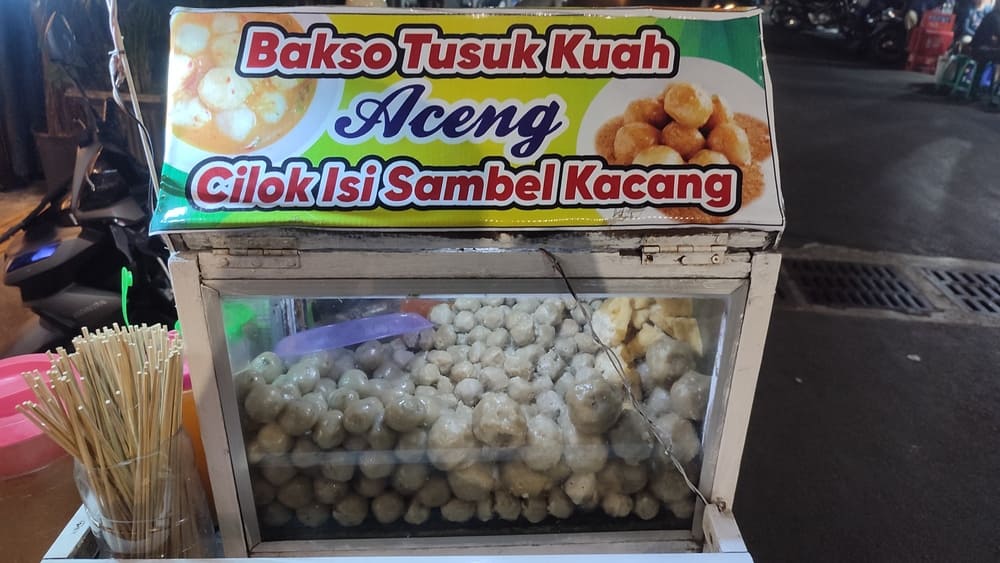
I have to confess that cilok is not one of my favorites. However, it’s insanely popular and it must be on this list of Indonesian street food snacks.
Cilok is another one of those “mix two words to describe a food” types of names. In this case, it’s “aci” (tapioca starch) and “dicolok” (~poked). Cilok is prepared into small balls and served with sweet soy sauce (kecap manis), chili sauce, peanut sauce, or a combination of these.
The standard version (cilok biasa) is just plain tapioca. There are other versions with meat (cilok daging) or in a soup (cilok kuah).
Cilok usually costs 500 IDR /0.04$ per ball.
7. Bakso

If you go to Indonesia, no matter which island, you will undoubtedly see a bakso vendor. Bakso is so Indonesian, that it might as well be the national food (step aside Nasi Goreng).
Simply put, bakso is a meatball. It can be beef, chicken, fish, or pork, but most are commonly made with beef surimi, i.e. finely ground beef molded into balls with a small addition of tapioca and salt
Bakso comes in different sizes – as small as walnuts and as big as an oversized baseball.
Bakso is often served as a main meal with noodles and vegetables (mie bakso) but is also often enjoyed as a street food snack.
Bakso usually costs between 500 and 1000 IDR (0.04 to 0.07$) per small ball.
8. Pentol
All other meatballs or doughballs that aren’t Bakso or Cilok are called Pentol. Pentol can have any number of ingredients, but most commonly a mix of flour and meat stuffed with a quail egg or tofu.
Pentol costs the same as bakso – 500 to 1000 IDR per ball.
9. Siomay
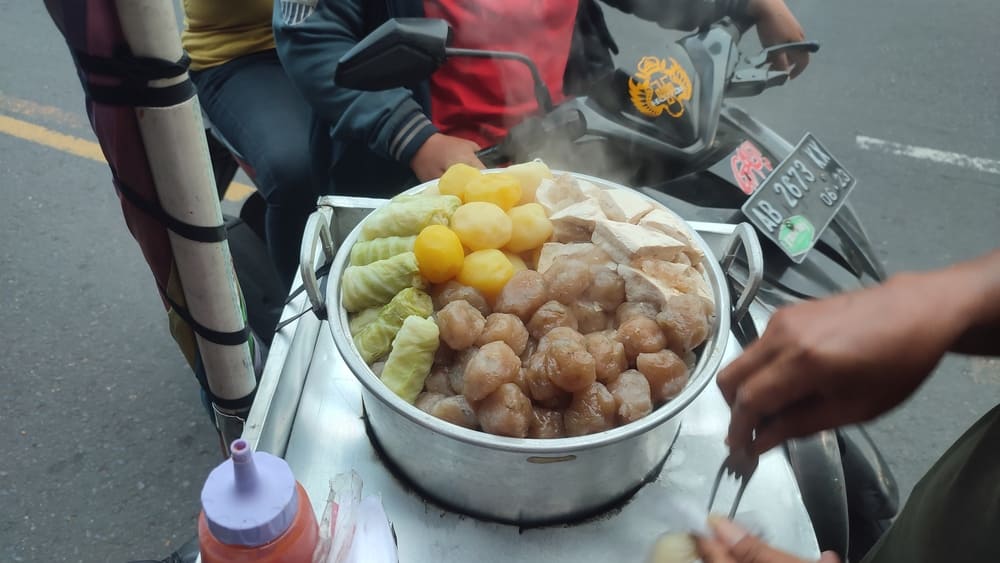
Also sometimes spelled Somai, this Indonesian snack isn’t a portmanteau! Yeah, I know, it’s surprising to me too, but it comes from the Chinese Shumai – dough filled with meat and veggies.
While traditionally made with pork (Chinese people love pork!), in Indonesia, it’s most often filled with fish (mackerel) as pork isn’t halal. Other popular variants include prawns, tofu, and cabbage.
You can find siomay everywhere across Indonesia. It is most often served with peanut sauce and chili sauce.
Siomay is sold in individual bite-sized pieces. One piece costs 1000 IDR / 0.07$.
10. Batagor
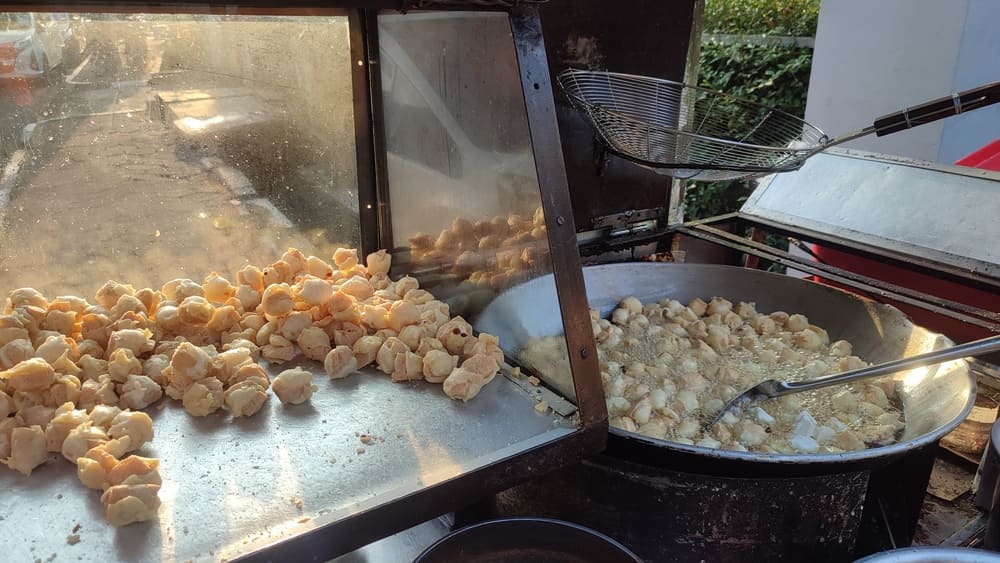
A popular variant of Siomay is Batagor, and we’re back to abbreviations and word moldings. Batagor is short for Bakso Tahu Goreng. The meat (most often mackerel fish) is stuffed into tofu, then wrapped in a wonton and deep fried.
It’s basically a deep-fried, crunchy version of siomay and thus often sold by the same vendors.
Batagor is also sold in individual pieces. One piece costs 1000 IDR / 0.07$.
Gorengan
Gorengan is a category of Indonesian snacks rather than a particular food. From the Indonesian word Goreng=fry, anything that’s battered and deep-fried is gorengan. All types of gorengan are most often 1000 IDR / 0.07$ per piece.
The most common varieties of gorengang are:
11. Tempe

Fermented soybeans, battered and deep fried. A staple food and a common side dish in Indonesian cuisine. Could also be enjoyed as a street food snack.
12. Mendoan
I myself don’t see much difference between Tempe and Mendoan but presumably, there is. Mendoan is softer and even a bit mushy. Basically a softer Tempe Goreng.
13. Oncom
Oncom is a more moldy version of Tempe. Before you scroll away in disgust, consider the fact that many of the foods we eat are fermented or moldy, but we enjoy them anyway (yogurt and blue cheese, to name a few).
Tempe is ready to be eaten before the mold produces spores, whereas Oncom is prepared after the spores appear.
Oncom is a Sundanese dish, very typical in West Java, but hard to find elsewhere in Indonesia.
14. Tahu Goreng

Tahu is Indonesian for tofu, so this is Fried Tofu. It’s also very common and goes well with a variety of meals or straight as a snack.
15. Bakwan Jagung
Or simply Corn Fritters. More often associated with the American Southwest, in Indonesia Bakwan Jagung is crunchier and thinner. For me that makes them all the more delicious!
16. Pisang Goreng
Pisang = Banana in Indonesian, so this is just fried bananas. Widely sold as snacks or desserts.
It becomes a wonderful dessert (part of my list of Indonesian desserts) when you combine it with some cheese in what is known as Pisang Keju.
17. Jasuke
If you thought this wasn’t a portmanteau, then you are right! It is… nah, just joking, of course it’s a combination of Jagung + susu + keju (corn + milk + cheese).
This snack comes from Korea and has penetrated all of Asia and even the West! I mean, haven’t you had sweetcorn in a plastic cup with some toppings? That’s Jasuke!
18. Lumpia

Lumpia is the Indonesian variation of the spring roll. They are usually deep-fried, filled with vegetables, egg, and/or chicken, prawns or beef, and sometimes bamboo shots (rebung).
They usually come with a side of small chilies or sambal for dipping.
A piece of lumpia costs from 4000 IDR / 0.27$ for a vegetarian option to 12000 IDR / 0.81$ for the one with beef.
19. Tahu Bulat
Tahu is tofu and bulat is round. Tahu bulat are round balls of fried tofu with garlic and pepper. Simple as that. The balls are usually flavored with some kind of hot powdered spice.
A ball of tahu bulat usually costs 500 IDR / 0.04$.
20. Sosis Bakar
Why isn’t “sausage” spelled the Indonesian way in English too? Doesn’t it make total sense, eh?
Sosis bakar is literally burnt sausage. It’s usually lightly grilled on a live fire in angkringans and gerobaks. It’s also lightly coated with kecap manis (sweet soy sauce) to give it a pleasant sweet taste.
One piece of sosis bakar usually costs between 1000 and 2000 IDR (0.07 to 0.14$)
21. Lemper
Lemper is the Indonesian interpretation of the Japanese Onigiri. A batch of glutinous rice completely wraps around pieces of shredded spicy chicken or fish. The snack is then packaged inside a banana leaf. The last step is to grill the whole thing releasing the pleasant aroma of the banana leaf.
Lemper usually costs around 3000 IDR / 0.2$ per piece.
22. Dimsum
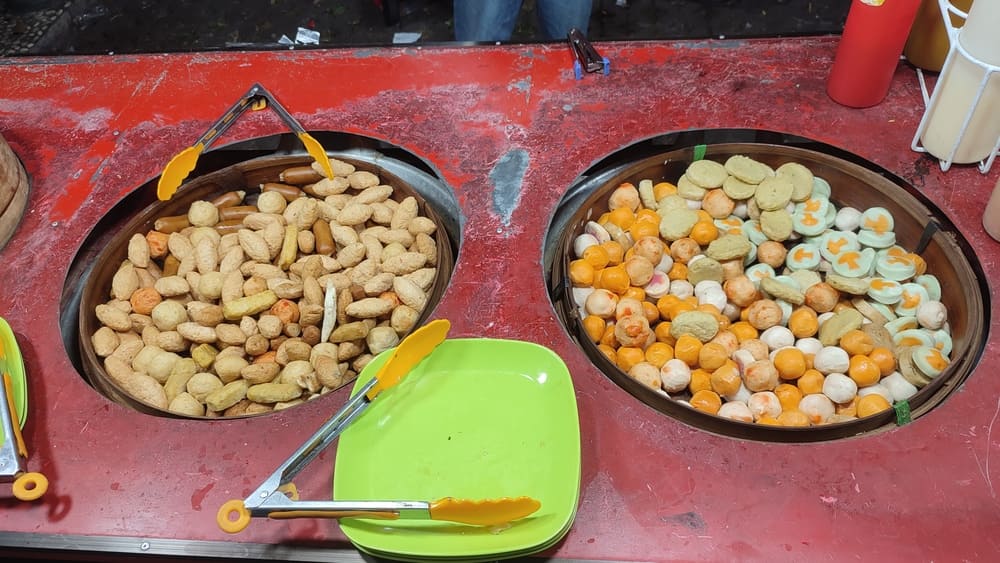
Dimsum is Chinese/Cantonese, you might say. You’d be correct. It literally means “touch the heart” and applies to any small food that goes well with tea.
Dimsum isn’t a particular food per se, it’s more about the bite-size pieces of snack. It can be a dumpling, a roll, a small bun, a sweet piece of cake, or small pieces of different meat.
The Indonesians do it a bit differently though. In Indonesia, dimsum is also small bite-sized pieces, but the variety is lower. They usually come in different colors, shapes, and sizes, but are most often small dumplings or dense tapioca flour cakes.
The price is usually 1000 IDR / 0.07$ per piece.
23. Baby crab
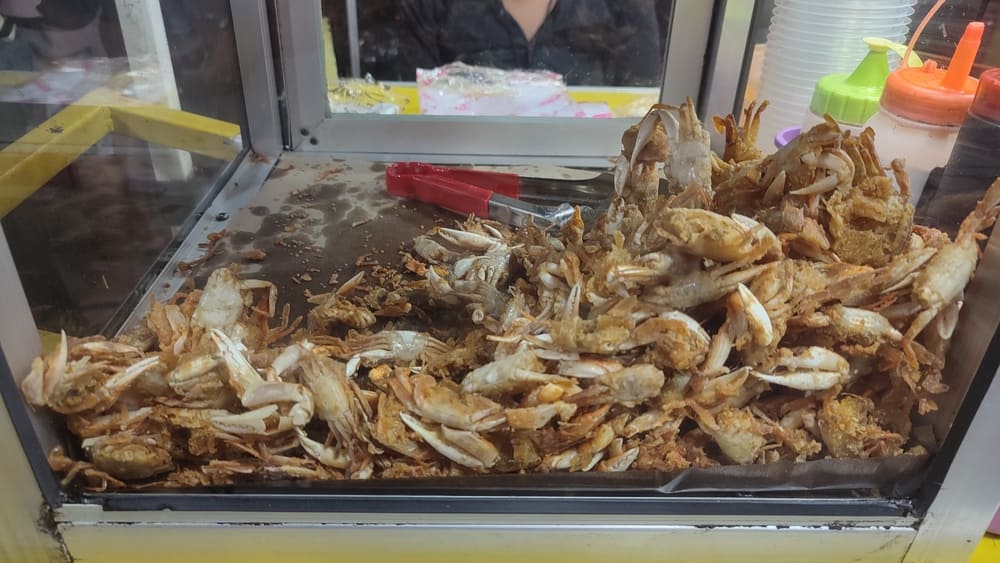
The baby crab snack is just what it sounds like – small baby crabs are deep-fried until crispy and eaten whole. They are crunchy and very flavorful. They are seasoned with plenty of delicious MSG, to be extra tasty.
A portion usually costs 10.000 IDR / 0.7$.
24. Corn dog
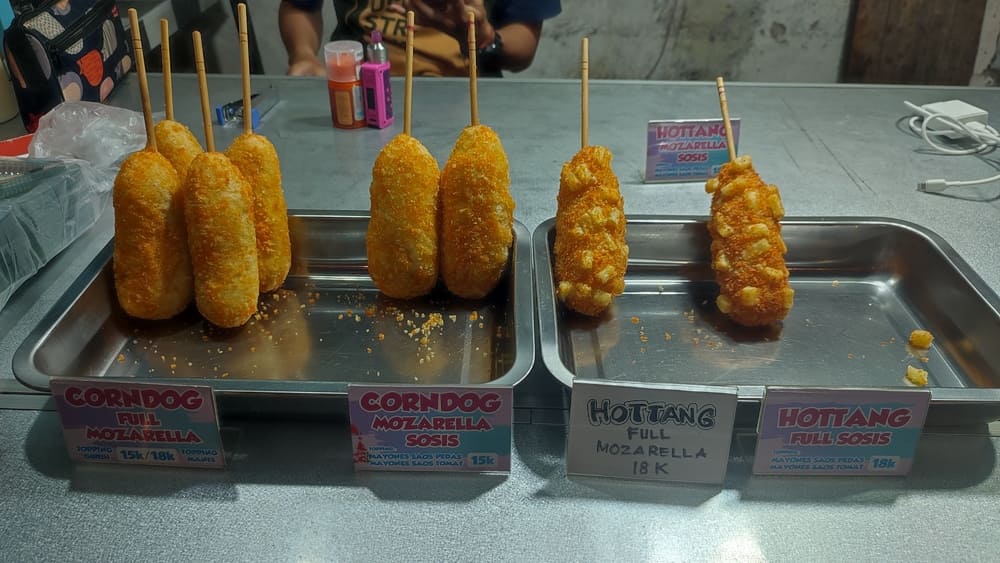
Even though corn dog has its origins in Texas, USA (it’s a funny story involving German immigrants and their sausages being unpalatable to the average Texan, look it up), it has penetrated many countries in the world, including Indonesia.
The Indonesian corn dog comes in two main varieties – only sausage or a mix of sausage and cheese. It’s deep-fried, of course, with copious amounts of hot sauce poured on top.
A corn dog usually costs between 15000 and 20000 IDR (1-1.35$).
25. Kerupuk
Kerupuk is the Indonesian version of chips/crisps. They come in a variety of different shapes, sizes, and flavors and can be made from many different ingredients or fruits like potatoes, yams, jackfruit, etc.
Kerupuk, or keripik, is often eaten together with the main meal but is also sometimes enjoyed as a standalone street snack.
A single kerupuk costs between 1000 and 3000 IDR (0.07 – 0.21$), and a pack of kerupuk crisps costs around 5000 IDR (0.35$).
26. Tahu Bulat
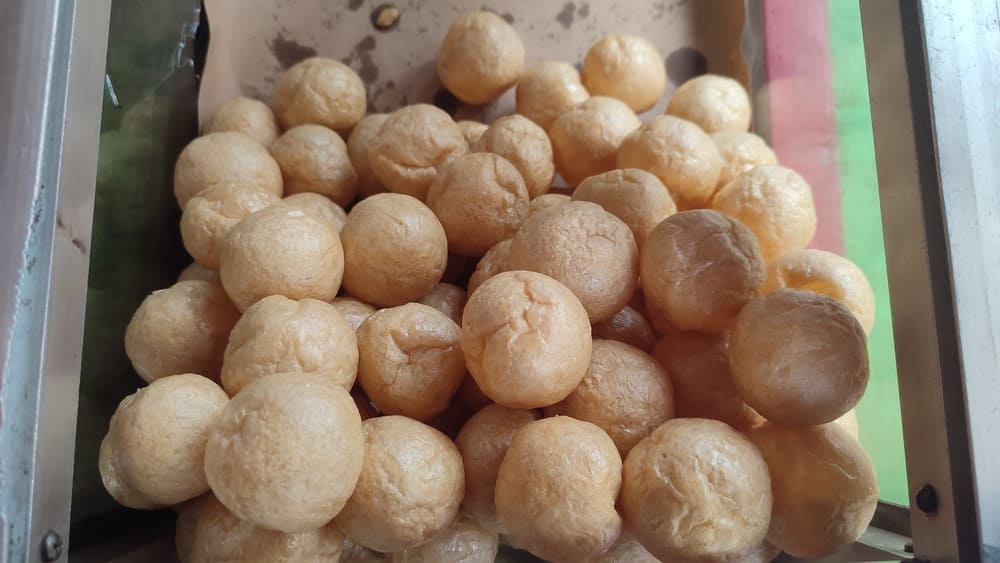
If you take some tofu (tahu) and mix it with egg yolks, then form small balls (bulan) and deep fry them, what you get is the Indonesian snack Tahu Bulat.
It’s a very airy snack, light and pleasantly savory. Vendors usually put additional MSG and some hot powder to add more flavor.
One tahu bulat costs 500 IDR / 0.035$. So incredibly cheap!
27. Sotong
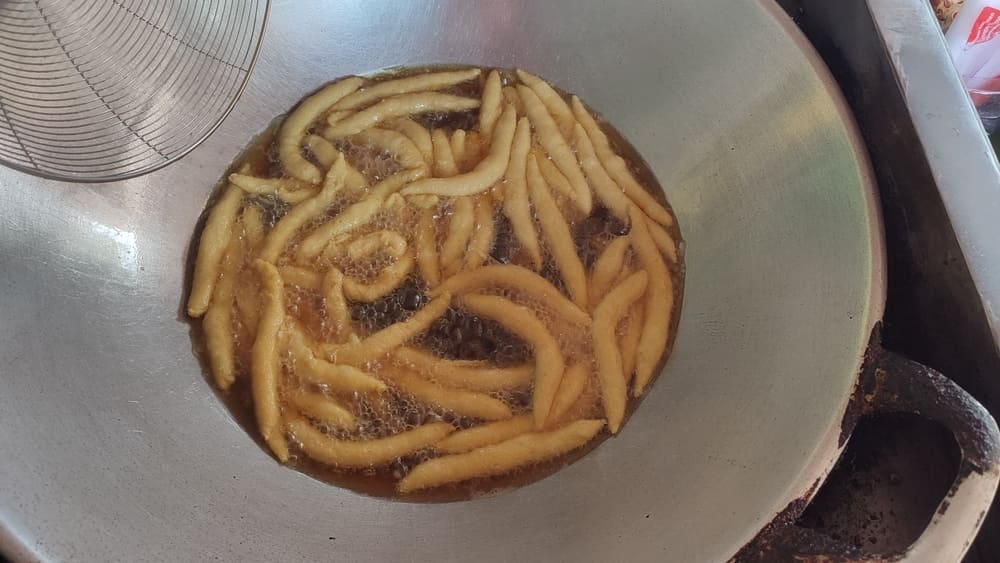
This Indonesian fried snack shares a name with the cuttlefish (at least in Indonesian) so many people incorrectly assume it’s seafood. On the contrary, the only ingredients are wheat flour, tapioca, and spices.
Sotong is usually long, not wider than your pinky, and is frequently sold together with tahu bulat.
One piece of sotong costs 500 IDR / 0.035$.
How is Indonesian street food sold?
There are five most common vendors that sell Indonesia street food snacks depending on the way they carry or display their food.
The ways that Indonesian street food and snacks are sold are gerobak, pikulan, sunggi, sepeda, and angkringan.
Gerobak

Vendors using gerobak is the most common method of selling street food in Indonesia. Gerobak is a wheeled food cart that the vendors push with their hands which doubles down as a motorcycle. They are sometimes fitted with a gas stove and always have some distinctive decorations depending on the food sold.
Gerobak vendors sell a variety of main meals and snacks, which are either prepared at home (like bakso or siomay) or cooked right then and there (for sate and nasi goreng).
Pikulan
The pikulan vendor carries two baskets of food balanced on his shoulders with a connecting rod. It’s one of the oldest methods of carrying food and has been used since at least the 9th century!
Sunggi
The vendors who use sunggi carry the food on their heads, usually in a bamboo basket. They are most commonly women and almost always sell sate (meat skewers). They sit in busy areas like the city’s main street or alun-alun (public square).
Sepeda
Sepeda is the Indonesian word for bicycle. These vendors have attached their food containers to a bicycle in order to be more mobile in busy urban areas. It looks similar to the gerobak, but the latter is usually hand-pushed, whereas the sepeda allows faster movement.
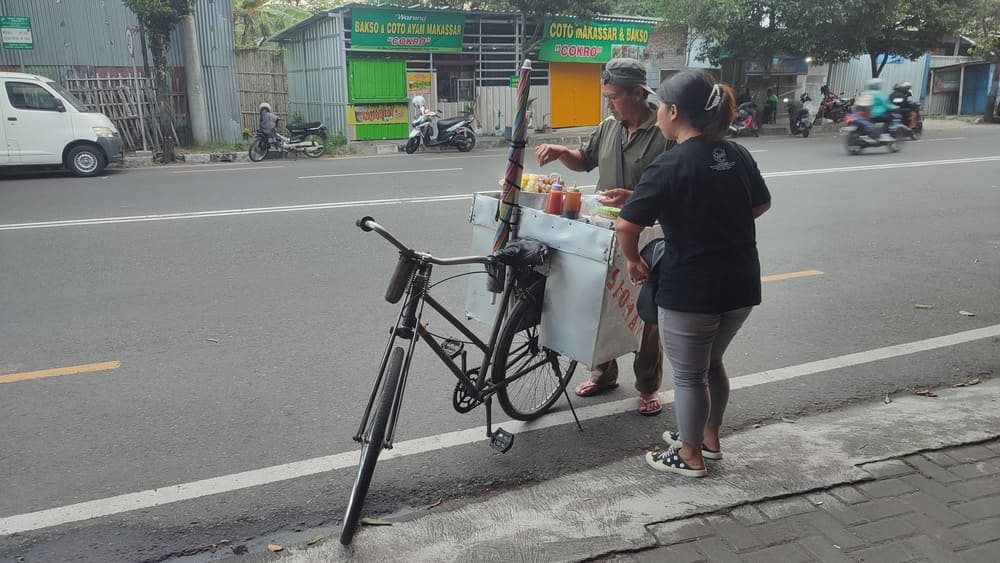
Angkringan
The angkringan is the traditional Javanese interpretation of the café. They are stationary carts with food spread on the table for people to pick. They can accommodate between 4 and 8 customers.
If you want just a snack, you can take something off the table, pay, and eat it on the go. Otherwise, you may want to sit down, pick the food you like, order your drink (iced tea, orange juice, or coffee), and pay when you leave by reporting all that you’ve eaten.
If you are in Indonesia and are already snacking, but don’t know what to write on your social media post, then check out this impressive list of food captions and quotes for Instagram.
Where to find Indonesian street food?
Food is literally everywhere in Indonesian cities. There will always be a street vendor no farther than the next street corner. For example, here are my suggestions for where to find authentic food in Yogyakarta.
Nevertheless, there are two places where street food and street snacks are concentrated – the main tourist street of a city and the Alun-alun (public square).
My recommendation: You cannot go wrong with visiting the Alun-alun!
You made it to the end! Now you want something sweet to top it all off? Why don’t you check this list of Indonesian desserts?

